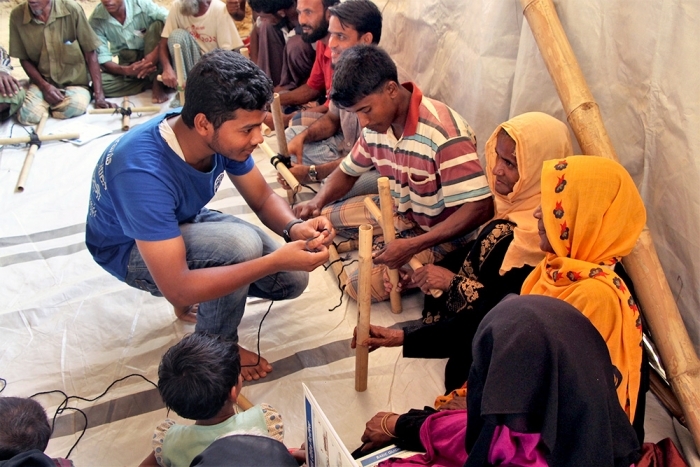IOM is training Rohingya refugees on how to improve their shelter ahead of monsoon season

The UN Migration Agency (IOM) has trained over 40,000 Rohingya on how to upgrade their shelters ahead of monsoon season.
In total 100,000 families will receive training, the IOM is also providing upgrade kits containing ropes, tarpaulin and tools.
Humanitarian agencies have raised numerous concerns over the threats monsoon season will bring.
Earlier this year in February UNHCR distributed upgraded shelter kits including bamboo, extra tarpaulin, string, rope, wire, and tools.
UK’s Department for International Development have also provided reinforced shelter and sandbags to 158,000 people in Cox's Bazar to protect them from winds and flood water.
The monsoon season brings with it risks of flooding, landslides and significant health concerns.
The World Health Organisation highlighted that “no single agency can meet the massive health needs” of the 1.3 million Rohingya refugees.
The IOM will continue to train refugees on upgrading their shelters with workshops that demonstrate the best methods of securing shelters in stormy conditions.
Estimates suggest that 120,000 people are at serious risk of landslides and flooding in the camps.
The training programmes have proved highly popular with the female refugees, empowering them to play a key role in preparing their shelters from the monsoon.
Dabal Rokaha, an IOM programme officer commented:
“Often their husbands are busy taking part in cash-for-work programmes [to improve ground conditions in the camps.When we started the trainings there might be 20 men and 5 women, but now we often see 70 per cent female participation. The women are getting more confident. They will take ownership of what they learn and when they go back to their shelters, their husbands will listen to them and take their advice”
Although rain is already affecting the camp, the full monsoon season is due to begin in just a few weeks.
Humanitarian and government agencies are urgently trying to prepare the area to minimise potential risks.
In addition, the IOM, in partnership with World Food Programme and UNHCR, are preparing safer land to relocate refugees to.
Médecins Sans Frontières recently opened new hospital in Cox’s Bazar to prepare for the increased health pressures brought on by monsoon season.
Despite the preparations and collaborations of numerous agencies, the topography and dense population of Cox’s Bazar means mitigating all risks is a great challenge.
Join us at the 4th Annual AIDF Asia Summit to discuss the significance of disaster risk management and resilience in Asia. The summit is taking place on 20-21 June 2018 in Bangkok.
If you’d like to stay informed on the latest updates in aid and development, please sign up for the AIDF newsletter.
Image credit: IOM














